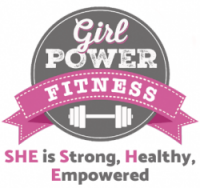You’re working out. You’re making strides. You want to track your progress, right? But what’s the best method to use? There are lots of articles and opinions on this topic and it’s easy to get overwhelmed. Here are a few ways to keep track of your momentum without the use of fancy and expensive tools.
1) Resting heart rate. Just have a seat and relax and find your pulse at either your carotid artery (neck) or at your wrist. Count for 60 seconds (or for 30 seconds and double it). >89 = poor. >79 = fair. >69 = average. >60 = good. <60 = excellent.
2) Resting blood pressure. You will need a blood pressure cuff for this one but you can buy them pretty cheaply at any pharmacy or grocery store. Many just require the push of a button and the machine takes care of the rest.
Normal blood pressure is characterized as Systolic being less than 120 and Diastolic being less than 80. Prehypertension: Systolic is 120-139. Diastolic is 80-89. Stage 1 hypertension: Systolic is 140-159. Diastolic is 90-99. Stage 2 hypertension: Systolic is 160 or higher. Diastolic is 100 or higher.
3)Body composition testing. You can determine your body composition with a simple math equation: weight in pounds divided by height in inches (doubled) x 703 = BMI. Underweight = <18.5. Normal weight = 18.5 – 24.9. Overweight = 25 – 29.9. Obese = 30 or greater.
4) Cardio-respiratory fitness testing. You can track your cardio fitness using the 3 minute step test. Using a 12 inch step, go up and down the step for 3 minutes. (Click the chart to make it bigger.)

5) Push up test. Perform as many push-ups as you can in one minute, going to the point where the elbows are at 90 degrees. You can do the push-ups on your toes or knees. (Click the chart to make it bigger.)

6) Half sit up test. Perform as many half sit ups (bent knee crunches) as you can in one minute. Full sit up tests are not recommended because the involvement of the hip flexors can stress the back. (Click the chart to make it bigger.)

So there you have it! Six simple ways to monitor your fitness. Here’s to getting stronger!
